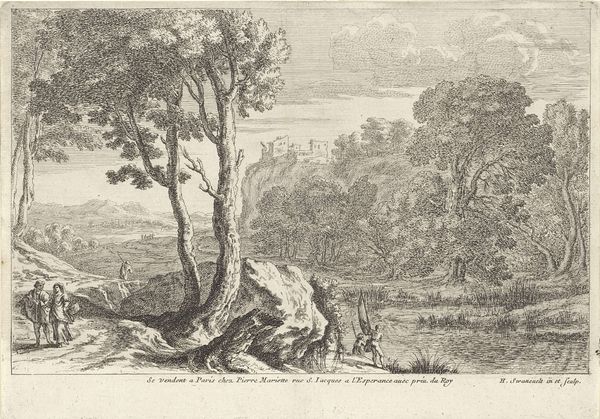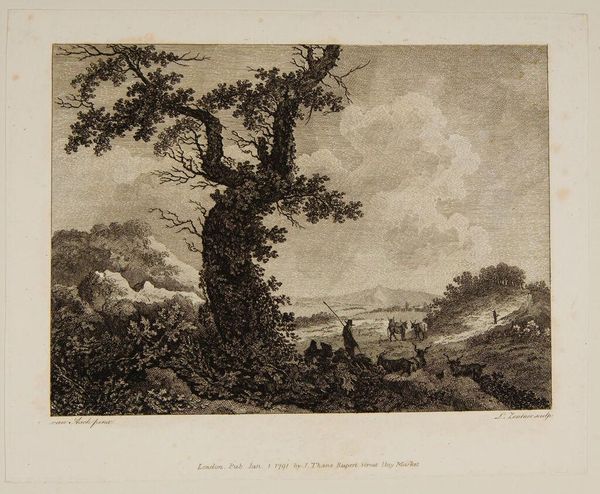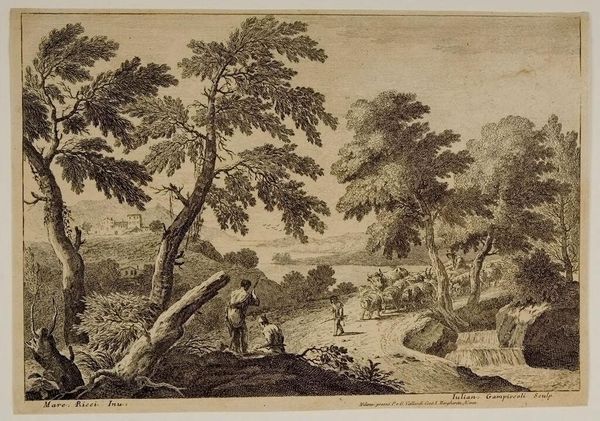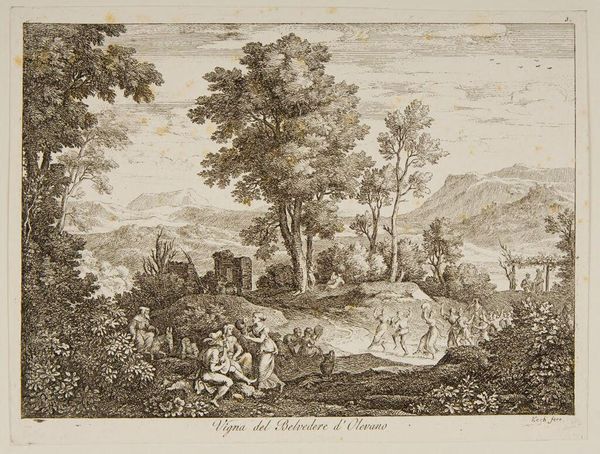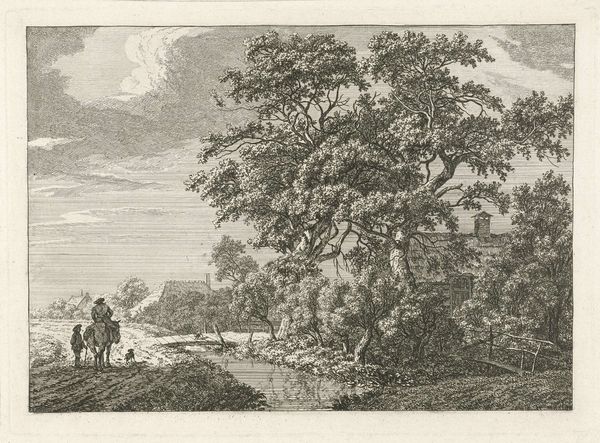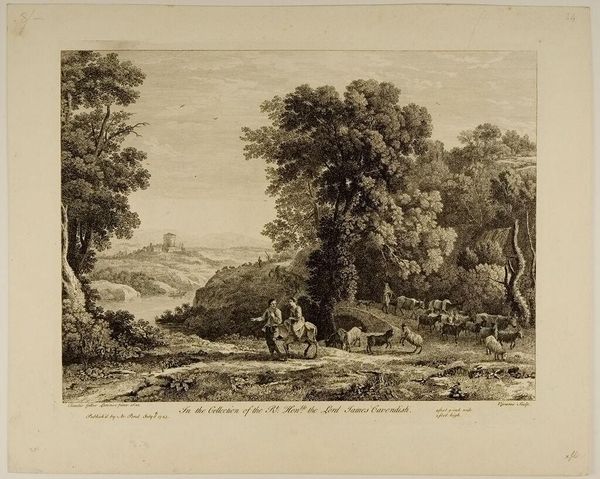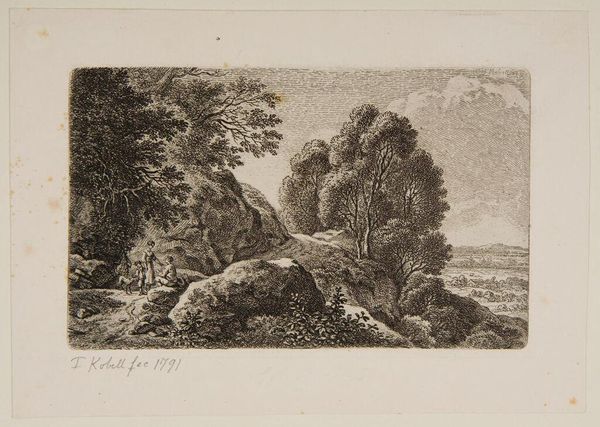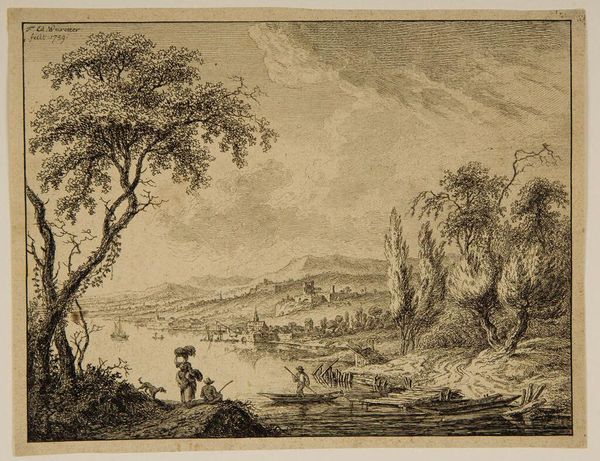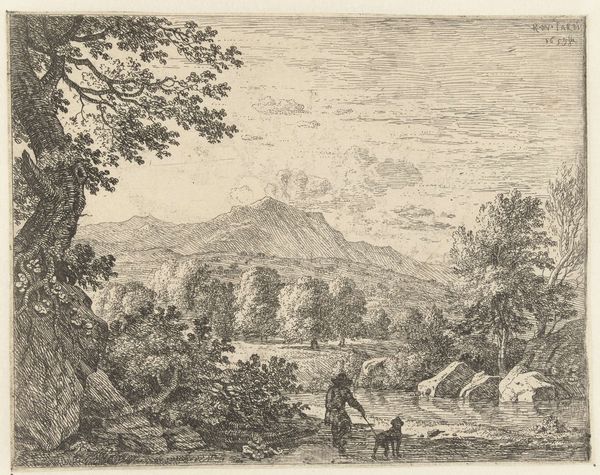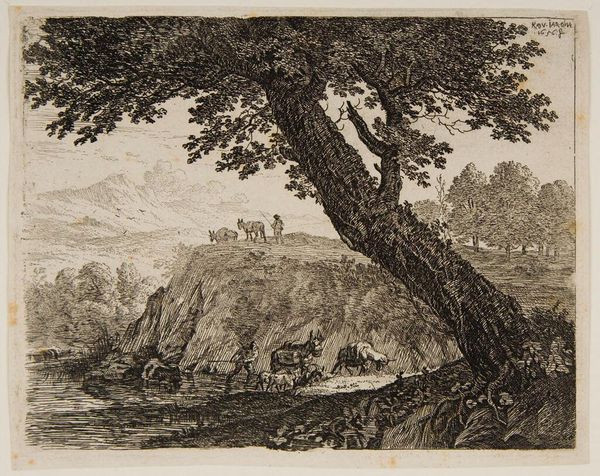
Copyright: CC0 1.0
Editor: This is "Peasant and Cattle on the Road" by J. L. L. C. Zentner, a print housed at the Harvard Art Museums. It feels like a very idealized, almost romantic vision of rural life. What do you see in this piece that tells a story about the art of its time? Curator: This print participates in a long tradition of landscape art that often masked complex social realities. Think about the rise of the public sphere during the Enlightenment. Images like these, seemingly benign, were often carefully crafted to project particular ideas about land ownership, social order, and national identity. Editor: So, it’s not just a pretty picture? What was its purpose? Curator: Not at all. Consider who this was made for – the emerging middle class with money for art. These images helped them define their own taste and status by associating with idealized notions of the countryside, a strategic removal from the reality of rural labor. Editor: That's fascinating. I never thought about landscape having so much to say! Curator: Exactly! Art isn't made in a vacuum. By considering the historical moment of its making, we can unpack those layers of meaning.
Comments
No comments
Be the first to comment and join the conversation on the ultimate creative platform.

